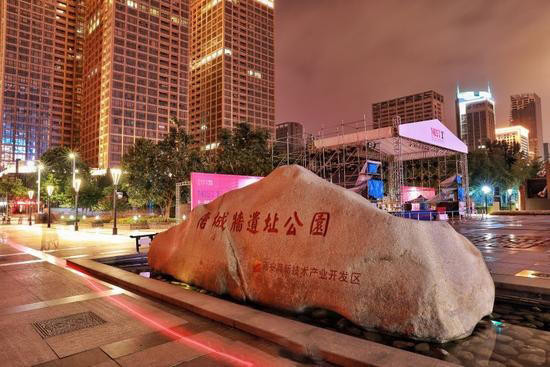This park in downtown Xi'an may seem ordinary, but in fact it has a great background.
In the most prosperous corner of Xi'an, there is actually a relic of the Tang Dynasty more than a thousand years ago buried. If it weren't for the words "Tang City Wall Ruins" carved on the stone tablet next to it, no one would have thought of this place. It is a historical relic amidst the dazzling lights and tall buildings. It is said that Xi'an is half of the city's monuments and the city's culture. At Yanpingmen Station on Xi'an Metro Line 3, there is such a park where modernity and history collide violently.

The prosperous Chang 'an City of Tang Dynasty
During the Tang Dynasty, Chang 'an City's population reached the largest in the world at that time. Cen Shen, a poet of the Tang Dynasty, once wrote a poem like "One Million Families in Chang 'an City", which also proved that the population of Chang' an City had reached one million at that time. According to historical records, Chang 'an City during the Tang Dynasty covered an area of more than 87 square kilometers and consisted of three parts: the Imperial City, the Palace City and the Waiguo City.

Chang 'an City Pattern Distribution
In Chang 'an City, there are twenty-five streets crisscrossing east, west, north and south, divided into two cities and 108 squares. The overall specifications are neatly laid out, and the streets are distributed in a "well" shape, as neat and orderly as a Go chessboard. The famous Ming City Wall in Xi'an has a circumference of about 14 kilometers. Compared with the grandeur of the Tang City Wall, the area of 108 squares in Chang' an City and the two cities of the Tang Dynasty reached 87.27 square kilometers, while the area enclosed by the Ming City Wall was only 11.32 square kilometers. This shows the grandeur of the Tang City Wall.

The establishment of a heritage park
When we arrived at Waikou City, a total of twelve city gates were opened. Yanping Gate and Kaiyuan Gate were on the south side of the city wall. A small amount of Tang Dynasty tiles, board tiles, tube tiles, lotus tiles and other building materials with the style of the Tang Dynasty were unearthed at the Yanpingmen site, and some rut traces were also found on the ground inside the doorway. Nowadays, in order to protect this site, an urban park-Tang City Wall Ruins Park-has been built on the basis of the original site. It has now become an important place for leisure and entertainment for nearby residents. This narrow park is about 3.7 kilometers long from north to south, starting from Science and Technology Road in the north and ending at Science and Technology No. 8 Road in the south. Although the surface buildings of the city wall ruins have long disappeared, the park reproduces the Tang city walls, city gates, moats and other relics. The entire park is divided into two parts: "inside the city" and "outside the city" by greening construction and other means, which is the greatest possible Restoration of the architectural pattern of the Tang Dynasty, allowing tourists to instantly travel back to the Tang Dynasty more than a thousand years ago in the bustling city.

In history, this park location occupied 7 of the 108 squares. Nowadays, the High-tech Zone has become one of the most prosperous areas in Xi'an City, surrounded by tall buildings and endless traffic. It is surrounded by such a modern area that the Tang City Wall Ruins Park is shaded by trees and the environment is quiet. In the evening, the leisure square is brightly lit, with people walking, flying kites, dancing square dances, and walking babies... It makes people sigh that Xi'an is worthy of being Xi'an. A casual leisure park also has such a profound historical background.
Previous Article:One-person free travel in Xi'an-Bell Tower Datang Sleepless City Route + Hotel Accommodation Tips
Next Article:Why has no one gone to Xi'an, a celebrity memorial hall that locals don't know about?
